Growing plants in the heart of the midwest, like Kansas, is easy as long as you know what to plant. Not everything will survive the sweltering summers and bone-chilling winters. But, it is still possible to successfully grow beautiful items like perennial flowers in your Kansas garden. The key is to find varieties that thrive in USDA Hardiness Zones 5b-7a and also don’t mind a bit of sun. We’ve gathered a list of our favorite perennial flowers for Kansas to help you get started on your planning!
1. Black-eyed Susan
Black-eyed Susan (Rudbeckia fulgida) grows in USDA Hardiness Zones 3 to 8 and is native to North America. It produces distinctive bright yellow blossoms with a black center. These stunning plants grow between two and four feet tall and wide. Black-eyed Susans require partial to full sun and are somewhat drought-tolerant. However, they will grow best in moist soil.
You will get the best blooms for the longest period of time if you deadhead the plant. The gorgeous flowers that reach up to three inches wide will last until fall that way. And a bonus is that black-eyed Susans are loved by pollinators. Sow this amazing flower in the fall for the best results.
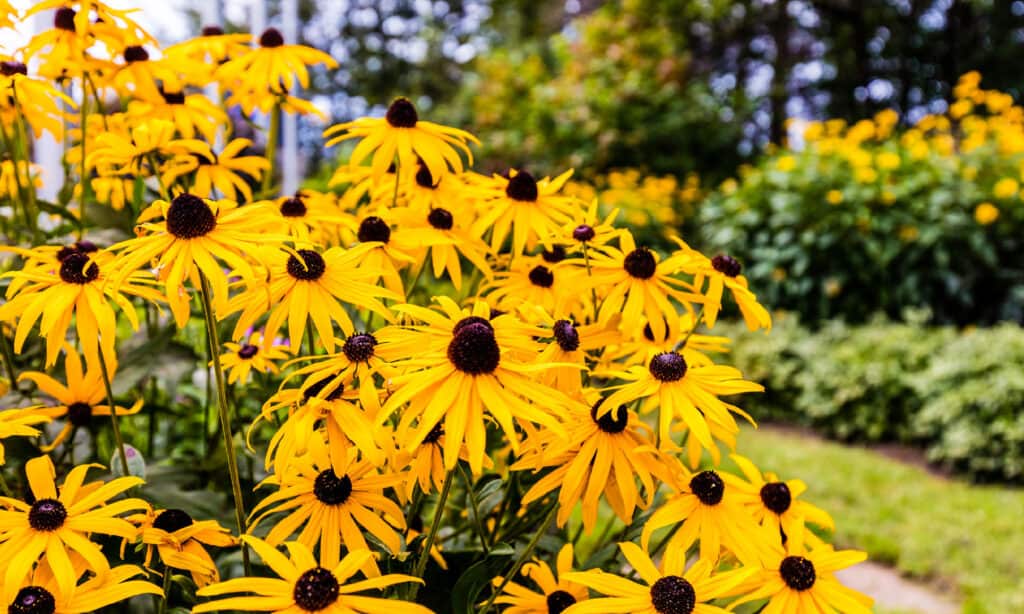
These lovely flowers will thrive in Kansas, thanks to their drought-tolerant nature.
©iStock.com/Dopeyden
2. Moonbeam Threadleaf Coreopsis
This hardy perennial is best suited for zones 3 to 9. Moonbeam threadleaf coreopsis (Coreopsis verticillata ‘Moonbeam’) blooms from summer through fall. It is part of the Asteraceae (daisy) family, and it develops pale yellow flowers with rounded edges. The plant grows up to 18 to 24 inches tall and wide. It is drought-tolerant and doesn’t mind poor soil. Plant it in a location that receives full sun to ensure its lovely flowers bloom abundantly.
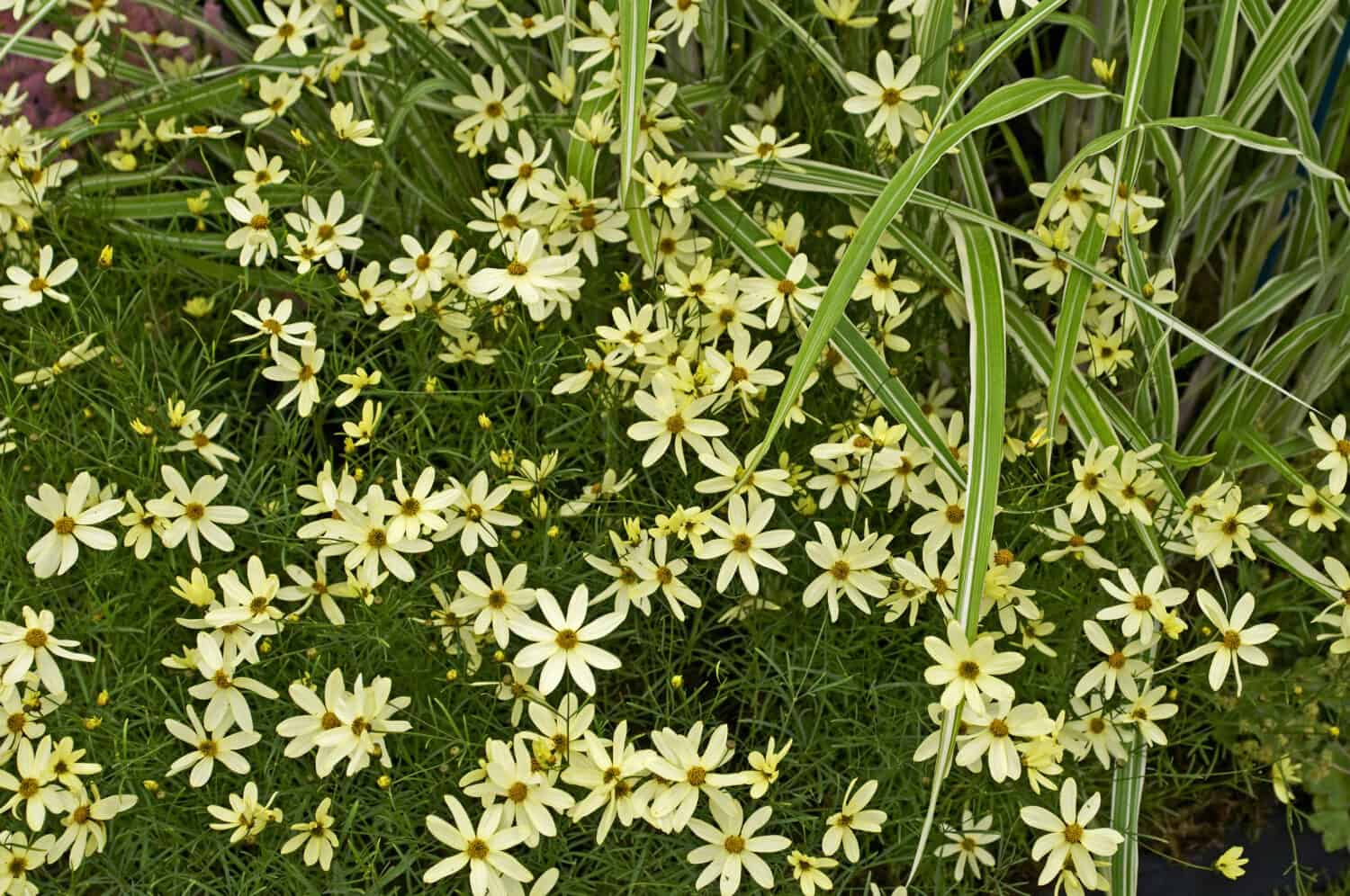
Plant some Moonbeam thread leaf coreopsis in your Kansas garden if you want to get rewarded with a stunning display of delicate flowers.
©Gardens by Design/Shutterstock.com
3. Bloody Geranium
Don’t be fooled by the name. This stunning flower shows off its incredible blossoms in zones 3 to 9. Bloody Geranium (Geranium sanguineum) blooms in late spring, but the flowers are short-lived. They are delicate pale pink or purple blossoms. This plant grows up to 1 or 2 feet tall and wide. It prefers full sun but tolerates some shade. Bloody Geranium needs rich soil that is well-draining. However, it will tolerate poor soil. Since it is deer and rabbit-resistant, it makes the ideal addition to any Kansas garden.
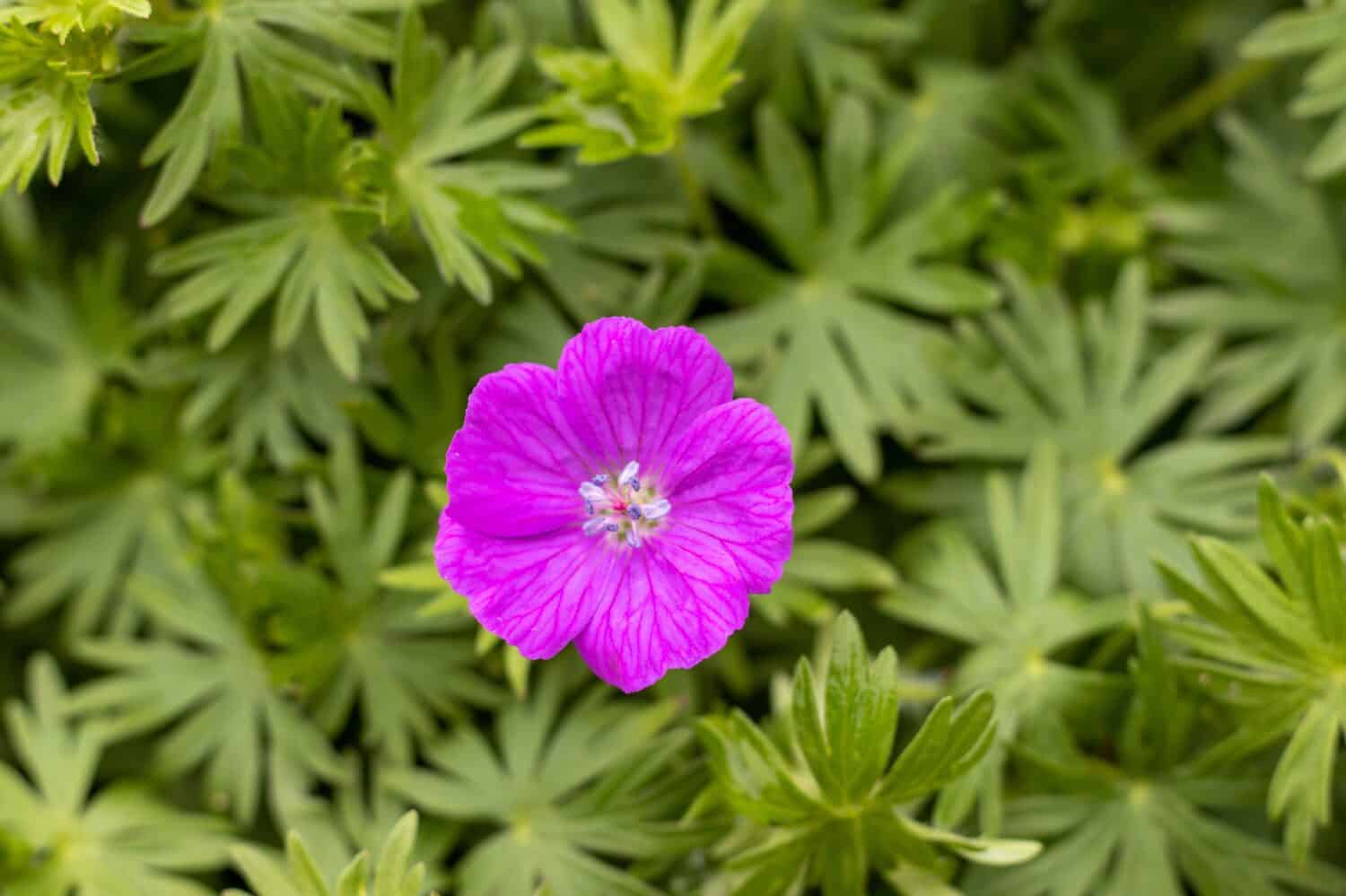
Consider adding a bloody geranium to your garden. These gorgeous flowers are rabbit- and deer-resistant. They also love getting plenty of sun!
©blubird/Shutterstock.com
4. Catnip
Catnip, or catmit (Nepeta spp.), grows best in zones 3 to 9. It doubles as a stunning perennial flower and is an ideal plant for a border or hedge. Catnip grows up to 24 inches tall. It has silver-tinted foliage and purple or blue spiky flowers. This lovely flower can tolerate partial shade to full sun. It is a popular addition to traditional herbal medicine and belongs to the Lamiaceae (mint) family.
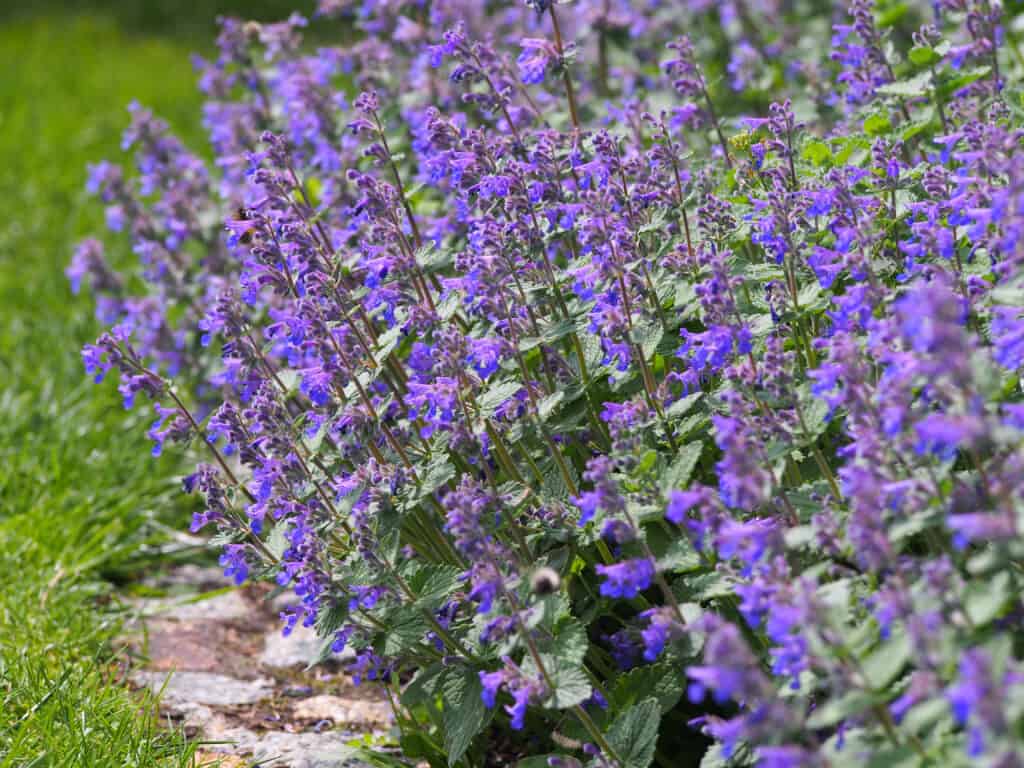
Catmint is known to attract cats. But people love it too!
©Anna Gratys/Shutterstock.com
5. Purple Coneflower
The large, distinctive blossoms and contrasting cones give coneflower (Echinacea spp.) its name. These lovely flowers grow to two to four feet tall and wide and are known for their purple flowers. However, some varieties have blossoms in different shades. You can find pinks, yellows, oranges, and whites. Coneflowers require full sun but will survive in partial shade. They are hardy in zones 3 to 9. Echinacea needs rich soil to thrive but will survive in poor or sandy soil.
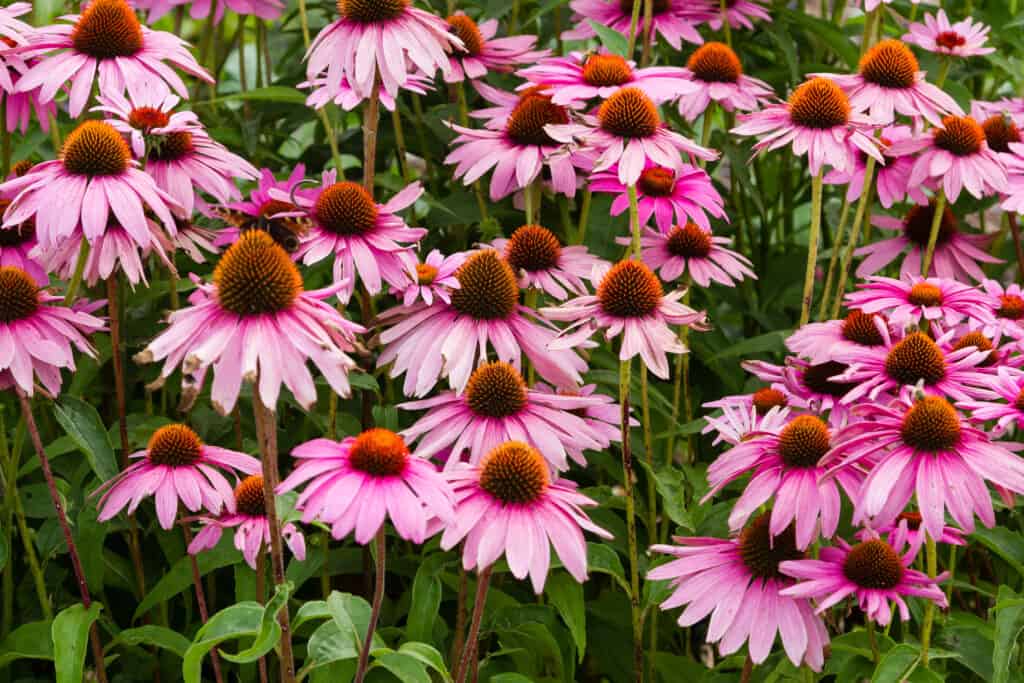
Echinacea will survive in a wide range of environments, so it can tolerate the temperature shift that Kansas experiences.
©Milosz Maslanka/Shutterstock.com
6. Daylilies
Daylilies (Hemerocallis spp.) are native to Asia. However, they thrive in much of the United States, including zones 3 to 9. The trumpet-like blossoms stick under from spring to fall. Expect red, pink, orange, yellow, bi-color blossoms. This flower is highly adaptable and can grow in most conditions. But it thrives in partial shade to full shade. Daylilies are also very heat tolerant, so they can hold up well to Kansas summers.
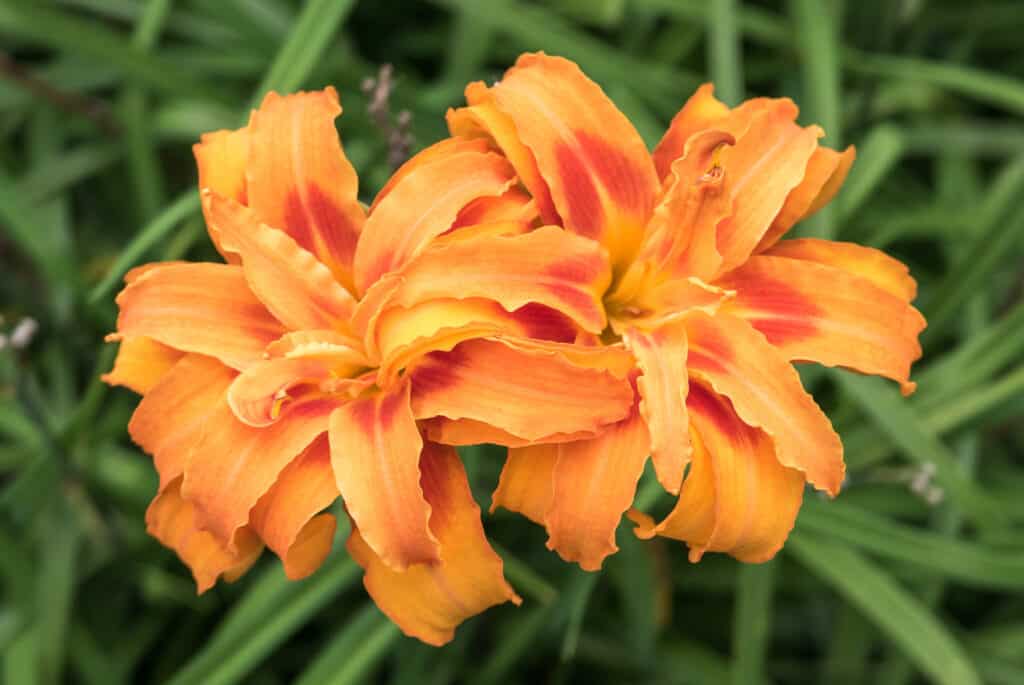
Daylilies are highly adaptable and can grow in almost any environment.
©iStock.com/lrosebrugh
7. Russian Sage
The lovely Russian sage (Perovskia atriplicifolia) plant grows in zones 5 to 9 and is a member of the Lamiaceae (mint) family. It reaches up to three feet tall and wide but is slow to mature. The delicate blue or purple flowers arrive in the summer. They last until the fall and are a favorite of local pollinators. Russian sage needs full sun but only average soil to thrive. It is also deer, rabbit, and drought-tolerant!
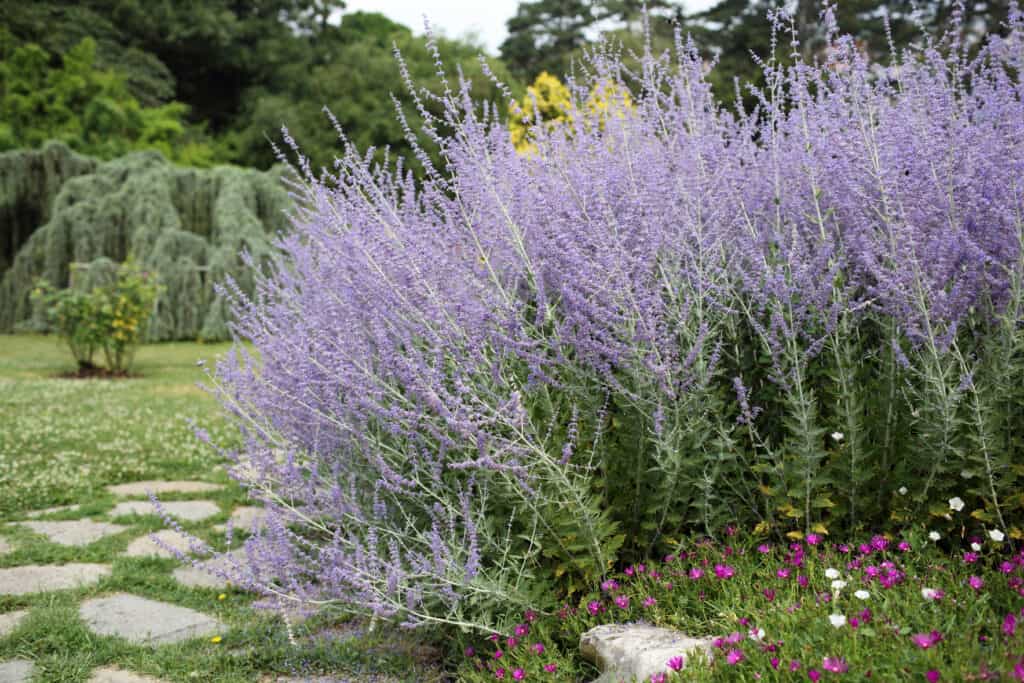
This slow-growing perennial is well worth the wait. It produces clusters of delicate flowers every summer that attract pollinators.
©iStock.com/loflo69
8. Lavender
Lavender (Lavandula spp.) is also in the Lamiaceae (mint) family. It grows best in zones 5 to 8. This gorgeous flower needs full sun but only moderate to poor soil conditions for optimum growth. It will reach two to three feet tall and equally as wide at maturity. While the most common varieties come in purple flowers, there are also white and pink varieties. As long as lavender stays in dry to nearly dry soil, it will remain happy.
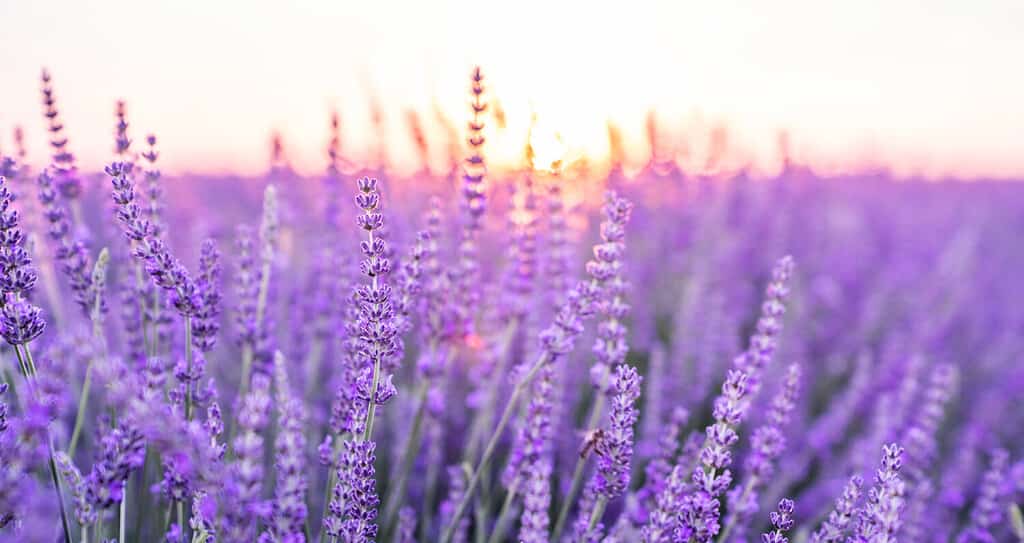
Lavender fields are truly a sight to behold!
©ESstock/Shutterstock.com
9. Yarrow
This common medicinal herb grows in zones 3 to 9. Yarrow (Achillea millefolium) prefers partial shade to full sun. It grows up to 36 inches tall with a similar width. This low-maintenance flower also attracts predatory insects. Yarrow is a member of the Asteraceae (Aster) family and is native to North America. Its blossoms arrive in the spring and last through fall. They are typically white, though some varieties are pink. These flowers like dry soil and prefer full sun or partial shade.
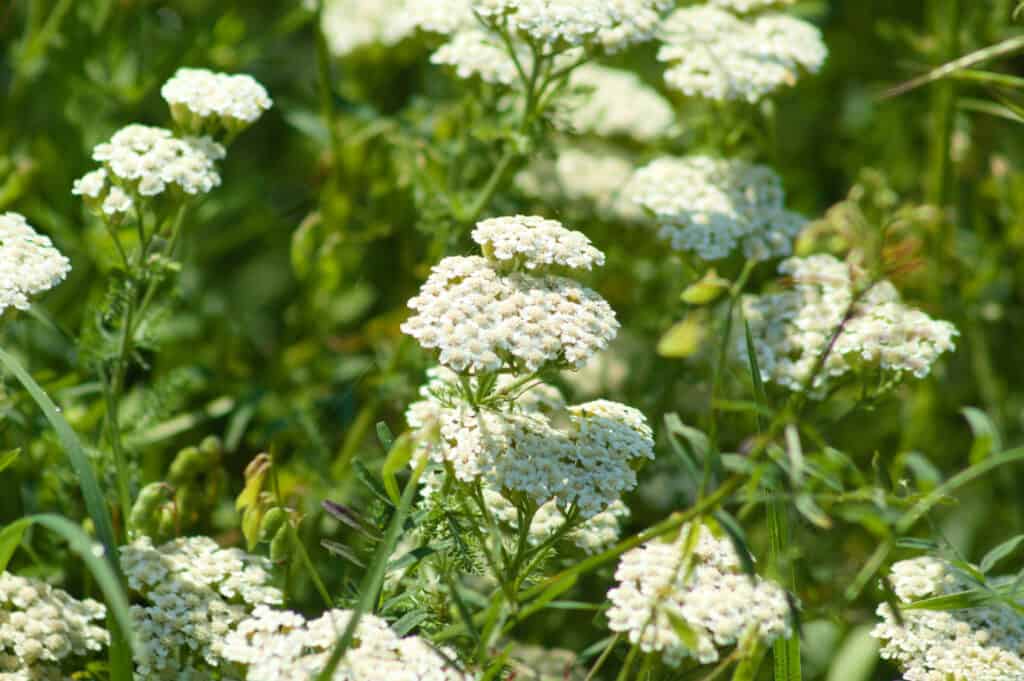
Yarrow is a critical addition to many traditional herbal medicines. It also produces a beautiful flower that makes a lovely addition to any yard.
©iStock.com/Silviu Carol Cenusa
10. Trumpet Creeper
Feel free to plant trumpet creeper (Campsis radicans) throughout Kanas. It is hardy in zones 4 to 9. This flower grows best in partial shade to full sun and loves heat. Its stunning blossoms arrive in the summer. They are clusters of reddish-orange trumpet-shaped flowers. True to its name, this vining plant tends to creep and take over. It reaches up to 40 feet! So make sure you have something for it to climb. And finally, this flower is drought-tolerant, making it ideal for a Kansas summer.
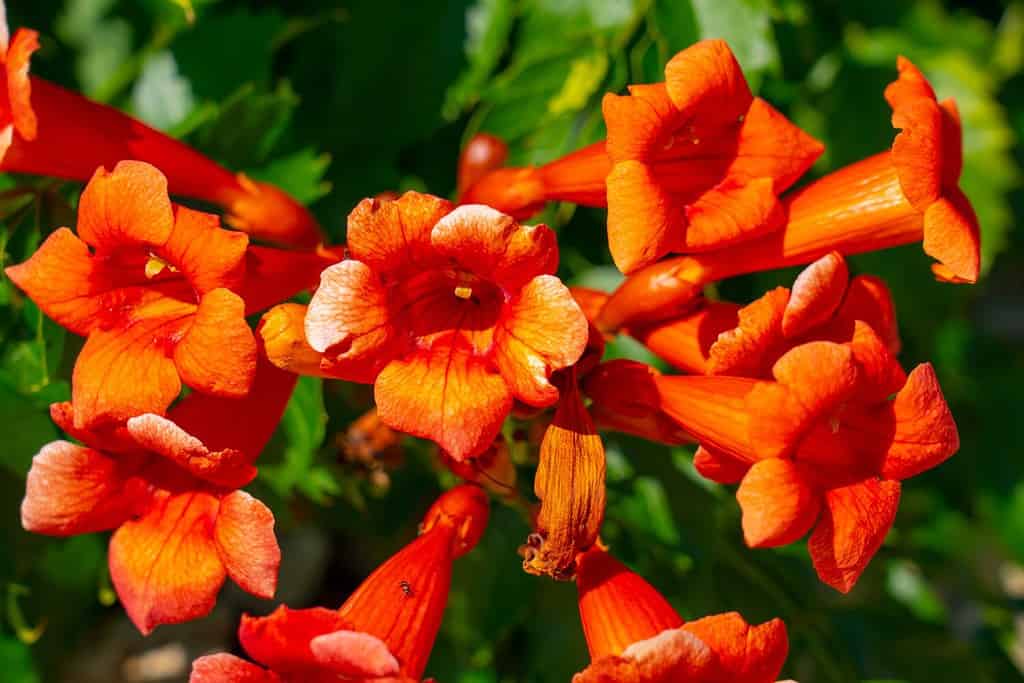
Trumpet creeper grows best in partial shade to full sun and loves heat.
©martin.dlugo/Shutterstock.com
11. Lupine
Lupine (Lupinus spp.) is a North American native. This plant family has over 300 species. Most require full sun to thrive. They grow best in USDA Hardiness Zones 3 to 10. They produce cone-shaped flowers in the spring or summer. Many species grow three to four feet tall and naturally add nitrogen to the soil. Plant lupine in well-draining soil in a spot that receives partial shade or full sun.
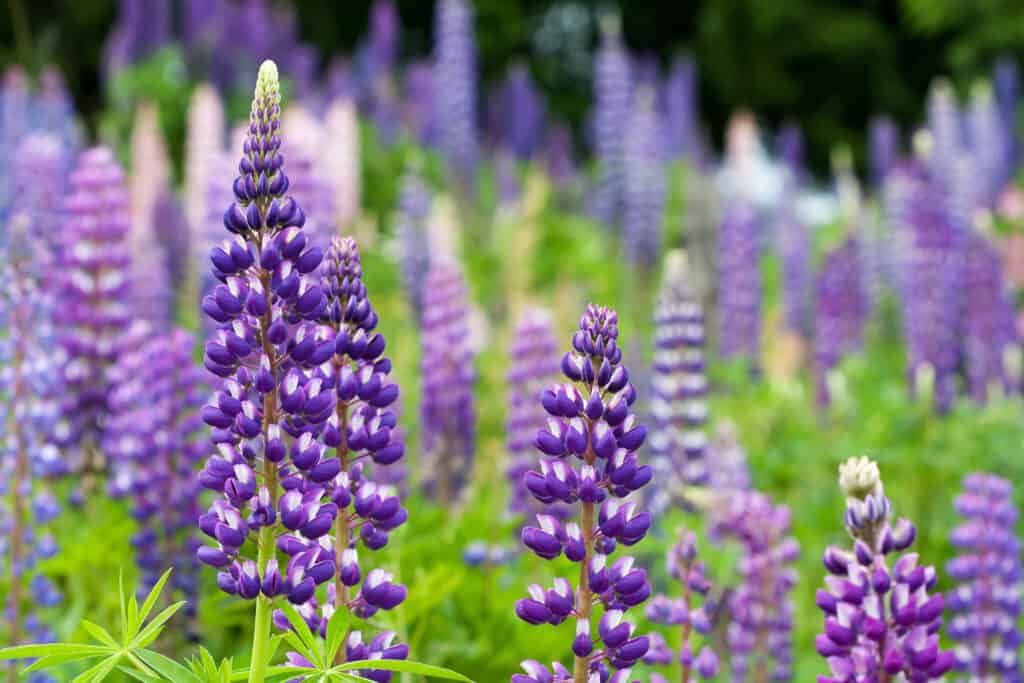
Lupines have magnificent flower spikes with blue to violet blossoms.
©iStock.com/yuelan
12. Verbena
This flower is for those living in the portions of Kansas that are in zone 7. It typically grows in zones 7 to 11. Planting verbena (Verbena spp.) in parts of Kansas is pushing it a little, but it is worth the try. This flower thrives in most environments and loves hot and dry conditions. So it will hold up well to Kansas summers. It grows up to four feet tall and produces magnificent violet or pink flowers from spring through fall.
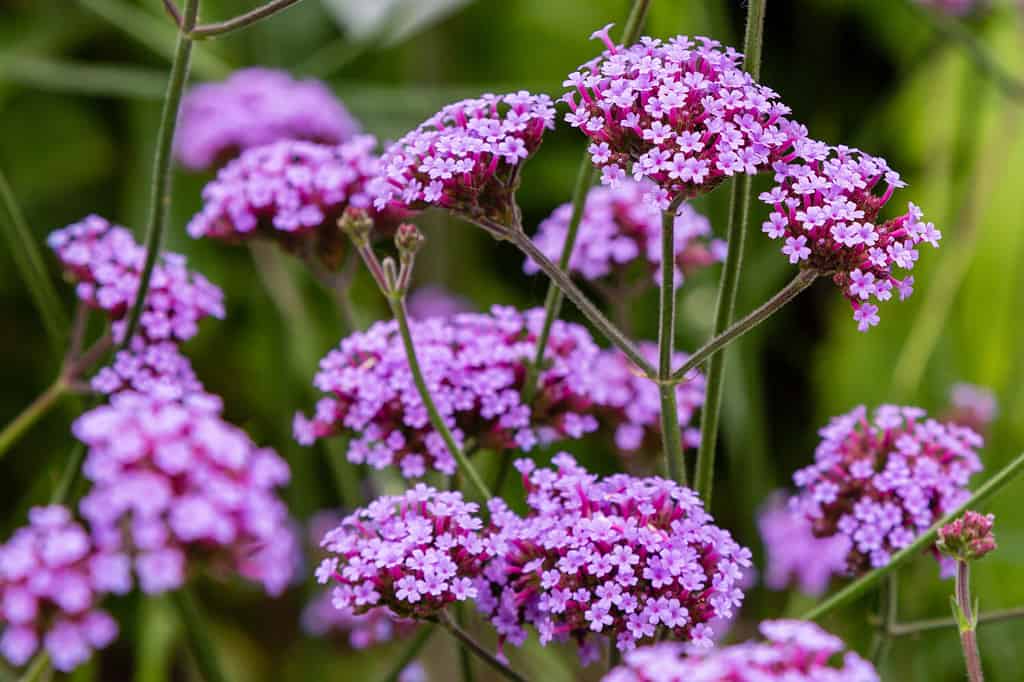
Verbena typically grows best in warmer environments. However, those living in zone 7 in Kansas can successfully grow this stunning flower.
©Flower_Garden/Shutterstock.com
13. Peony
Peonies (Paeonia spp.) produce enormous flowers with yellow, pink, red, white, or bi-color blossoms that arrive in late spring. These stunning flowers prefer rich, well-draining soil with full sun to partial shade. They grow up to three feet tall and thrive in zones 3 to 8.
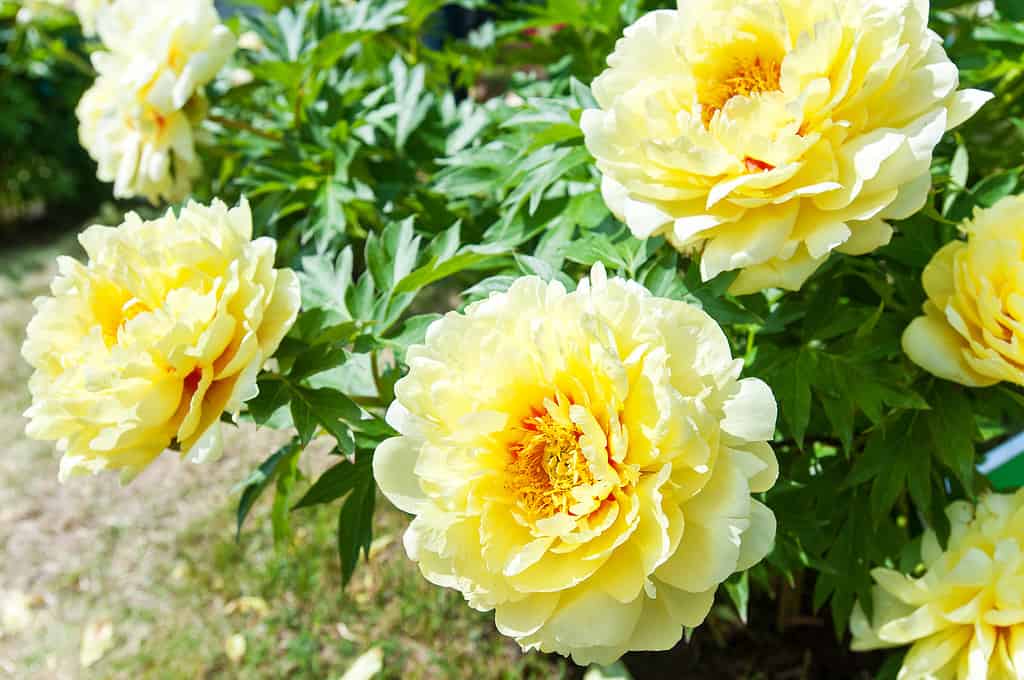
Peonies produce enormous flowers with yellow, pink, red, white, or bi-color blossoms that arrive in late spring.
©AnnaElizabeth photography/Shutterstock.com
14. Purple Poppy-mallow
Last but certainly not least is a flower native to Kansas. True to its name, purple poppy-mallow (Callirhoe involucrata) produces purple blossoms. This vining plant is a member of the Malvaceae (Mallow) family and grows up to three feet long. It requires full sun to partial shade but has no soil preference. Purple poppy-mallow grows best in zones 4 to 8. Its purple, white, or pink blooms arrive in summer and last through fall.
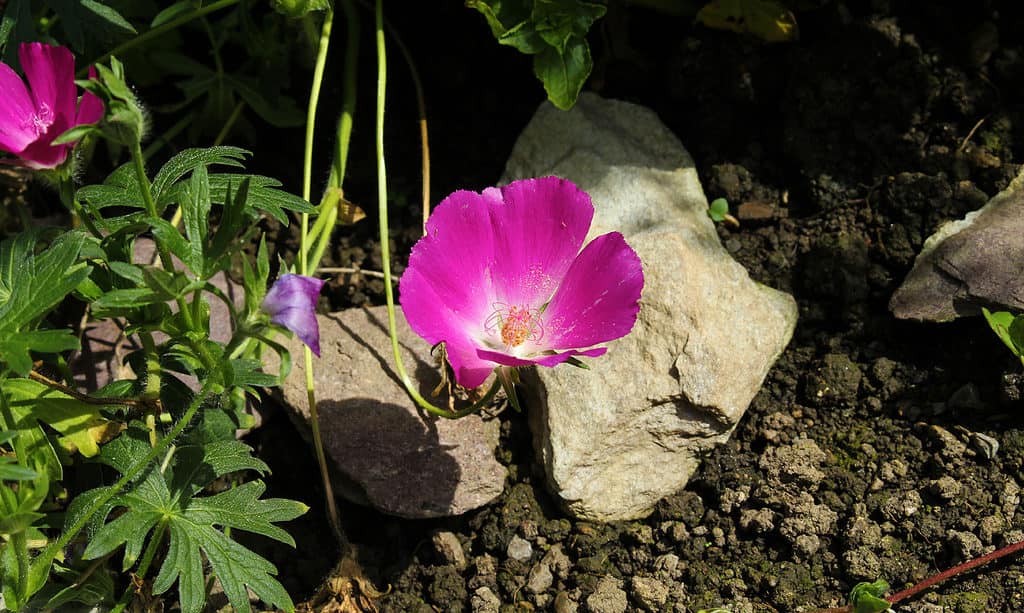
Purple poppy-mallow is part of the mallow family and is native to Kansas.
©iStock.com/RukiMedia
Summary of the 14 Best Perennial Flowers for Kansas
| Number | Flower | Growing Conditions | Bloom Time |
|---|---|---|---|
| 1 | Black-eyed Susan | This flower needs partial to full sun. It is drought-tolerant but prefers moist soil. | Summer through fall. |
| 2 | Moonbeam Threadleaf Coreopsis | It is drought-tolerant and doesn’t mind poor soils. Plant in full sun for optimum flower production. | Summer through fall. |
| 3 | Bloody Geranium | It needs full sun for most of the day but can tolerate some shade. This flower is drought-tolerant. It prefers rich soil but can handle poor soil. | Late spring. |
| 4 | Catnip | Catnip needs partial shade to full sun. It likes well-draining soil, but the quality of soil doesn’t matter as much. Once established, this flower is drought-tolerant. | Spring and summer. |
| 5 | Purple Coneflower | This flower requires full sun and rich soil to thrive. It can survive in poor soil, though, if necessary. | Spring through fall. |
| 6 | Daylilies | Daylilies need partial shade to full shade and are heat-tolerant. | Spring through fall. |
| 7 | Russian Sage | Russian sage needs full sun but only average soil to thrive. It is low-maintenance and is deer, rabbit, and drought-tolerant. | Summer through fall. |
| 8 | Lavender | Lavender needs full sun. However, it only needs poor to moderate soil. As long as the ground is dry or close to dry, it will be happy. | Summer |
| 9 | Yarrow | Partial shade to full sun and dry soil will help yarrow plants thrive. | Spring through fall. |
| 10 | Trumpet Creeper | Trumpet creeper needs partial shade to full sun. It grows best in the heat of summer and is drought-tolerant. | Summer into early fall. |
| 11 | Lupine | Full sun or partial shade will help lupine thrive. These flowers also need well-draining soil. | Spring through summer. |
| 12 | Verbena | Verbena requires partial shade to full sun. It is drought-tolerant. | Spring through fall. |
| 13 | Peony | Peonies grow best in full sun to partial shade. They thrive in fertile, well-draining soil. | Late spring into summer. |
| 14 | Purple Poppy-mallow | Purple poppy-mallow loves full sun to partial shade and will live in any type of soil. | Summer through fall. |
The photo featured at the top of this post is © iStock.com/RukiMedia
Thank you for reading! Have some feedback for us? Contact the AZ Animals editorial team.







